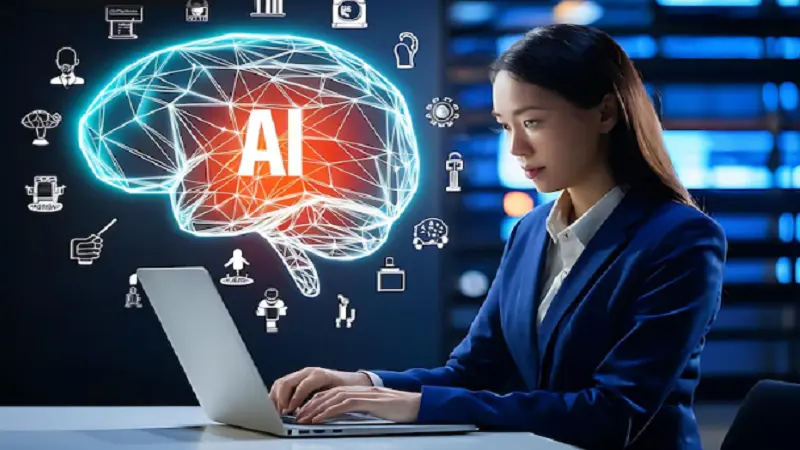In the realm of artificial intelligence, few names carry as much weight as OpenAI. With its groundbreaking innovations and ambitious goals, OpenAI has consistently pushed the boundaries of what artificial intelligence can achieve. One of the most significant milestones in this journey was the development of GPT-3, a state-of-the-art language model with 175 billion parameters. However, the story of GPT-3’s development is not just about the model itself but also about the rich Sources Openai 1.6b Midoctober Openai Openai and insights that fueled its creation. In this article, we will explore the journey of OpenAI, focusing on the pivotal role of sources and data, and how this culminated in the release of GPT-3 in mid-October 2020. Sources Openai 1.6b Midoctober Openai 5b
The Genesis of OpenAI
OpenAI was founded in December 2015 with the mission to ensure that artificial general intelligence (AGI) benefits all of humanity. This ambitious goal set the stage for a series of remarkable advancements in AI research. The organization, backed by industry giants such as Elon Musk, Sam Altman, Greg Brockman, Ilya Sutskever, John Schulman, and Wojciech Zaremba, started its journey by focusing on developing safe and beneficial AI technologies. Sources Openai 1.6b Midoctober Openai 5b
From the outset, OpenAI recognized the importance of high-quality data Sources Openai 1.6b Midoctober Openai Openai in training robust AI models. The journey from OpenAI’s inception to the development of GPT-3 was marked by a series of progressive steps, each building on the knowledge and insights gleaned from previous iterations. Sources Openai 1.6b Midoctober Openai 5b
The Evolution of Language Models
Before GPT-3, there was GPT-2, an impressive language model in its own right. Released in February 2019, GPT-2 had 1.5 billion parameters and demonstrated remarkable capabilities in generating coherent and contextually relevant text. However, GPT-2 also highlighted the challenges and responsibilities associated with powerful AI models, particularly concerning their potential misuse. Sources Openai 1.6b Midoctober Openai Openai
Despite these challenges, the success of GPT-2 provided OpenAI with valuable insights into the architecture and training of large-scale language models. The team learned that increasing the size of the model and the amount of training data could lead to significant improvements in performance. This understanding set the stage for the development of GPT-3. Sources Openai 1.6b Midoctober Openai Openai
Sources and Data: The Lifeblood of GPT-3
At the heart of GPT-3’s development was an extensive collection of diverse and high-quality data Sources Openai 1.6b Midoctober Openai Openai. OpenAI used a combination of publicly available datasets and proprietary Sources Openai 1.6b Midoctober Openai Openai to train the model. The training data included a wide range of text from books, articles, websites, and other written material, ensuring that GPT-3 could generate human-like text across various topics and contexts. Sources Openai 1.6b Midoctober Openai Openai
The importance of data diversity cannot be overstated. By incorporating a broad spectrum of sources, OpenAI ensured that GPT-3 could understand and generate text in multiple languages, styles, and domains. This diversity was crucial in making GPT-3 a versatile tool capable of performing a wide range of tasks, from answering questions to writing essays, translating languages, and even creating poetry. Sources 1b 1.6b Bengaluru
The Role of Mid-October: A Milestone in AI Development
The release of GPT-3 in mid-October 2020 was a landmark moment in AI development. This release marked the culmination of years of research, experimentation, and fine-tuning. The mid-October launch was strategic, allowing OpenAI to capture the attention of the AI community and the broader public at a time when interest in AI technologies was at an all-time high. Sources 1b 1.6b Bengaluru
The timing of the release also allowed OpenAI to showcase the model’s capabilities in various applications. From generating code snippets to composing music, GPT-3’s versatility and power were on full display, capturing the imagination of developers, researchers, and enthusiasts worldwide. Sources 1b 1.6b Bengaluru
OpenAI’s Commitment to Ethical AI
While the release of GPT-3 was a technical triumph, it also underscored OpenAI’s commitment to ethical AI development. OpenAI implemented robust safety measures to mitigate the risks associated with powerful language models. These measures included thorough testing, controlled access to the model, and continuous monitoring for potential misuse. Sources 1.6b Midoctober Openai Openai 5b
Moreover, OpenAI engaged with the broader AI community to gather feedback and insights on GPT-3’s performance and impact. This collaborative approach ensured that the development and deployment of GPT-3 were guided by a diverse set of perspectives, ultimately contributing to the model’s success and acceptance. Sources 1.6b Midoctober Openai Openai 5b
The Impact of GPT-3: Transforming Industries and Beyond
Since its release, GPT-3 has had a profound impact on various industries. Its ability to generate human-like text has opened up new possibilities in fields such as customer service, content creation, education, and entertainment. Companies and developers have leveraged GPT-3 to create innovative applications that enhance productivity, improve user experiences, and drive business growth. Sources 1.6b Midoctober Openai 5b
In customer service, for example, GPT-3-powered chatbots and virtual assistants have transformed how businesses interact with their customers. These AI-driven solutions can handle a wide range of queries, providing timely and accurate responses, and freeing up human agents to focus on more complex tasks. Sources 1.6b Midoctober Openai 5b
In content creation, GPT-3 has enabled writers and marketers to generate high-quality articles, advertisements, and social media posts quickly and efficiently. By automating routine writing tasks, GPT-3 has allowed creative professionals to focus on more strategic and creative aspects of their work. Sources 1.6b Midoctober Openai 5b
The educational sector has also benefited from GPT-3’s capabilities. Educators and students alike have used the model to assist with research, generate study materials, and even develop personalized learning experiences. GPT-3’s ability to understand and generate text in multiple languages has made it a valuable tool in global education.
In entertainment, GPT-3 has been used to create interactive storytelling experiences, generate game dialogue, and compose music. Its versatility and creativity have opened up new avenues for artistic expression and audience engagement.
Looking Ahead: The Future of OpenAI and Language Models
The success of GPT-3 is a testament to the power of combining high-quality data sources, cutting-edge research, and a commitment to ethical AI development. As OpenAI continues to push the boundaries of what AI can achieve, the lessons learned from GPT-3 will undoubtedly inform future advancements.
Looking ahead, the development of even larger and more capable language models is on the horizon. These models will likely incorporate even more diverse data Sources Openai 1.6b Midoctober Openai Openai and leverage advanced training techniques to achieve unprecedented levels of performance. However, with these advancements will come new challenges and responsibilities.
OpenAI’s ongoing commitment to ethical AI development will be crucial in navigating these challenges. By engaging with the broader AI community, policymakers, and the public, OpenAI can ensure that future AI technologies are developed and deployed in ways that benefit all of humanity.
Conclusion
The story of GPT-3 is a story of innovation, collaboration, and responsibility. From its inception to its release in mid-October 2020, GPT-3 represents the culmination of years of research, experimentation, and dedication. The diverse and high-quality data Sources Openai 1.6b Midoctober Openai Openai that fueled its development played a crucial role in making it one of the most advanced language models to date.














